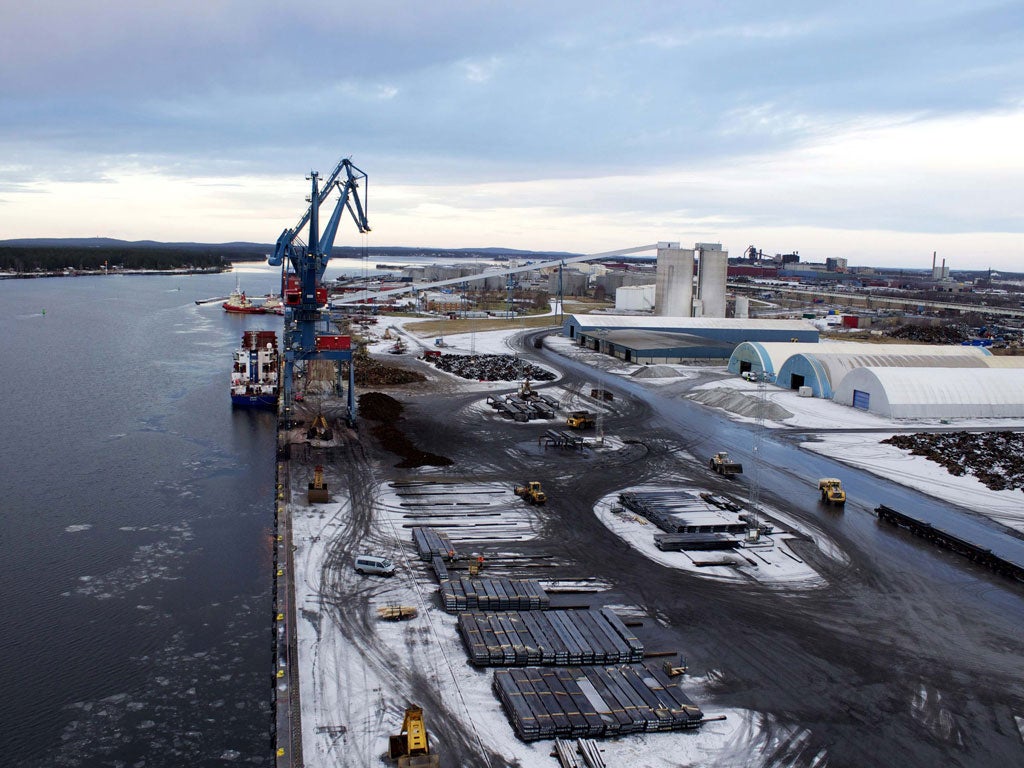Sweden: The land of the rising coastline
The climate change threat to low-lying islands and cities is well known, but Scandinavia faces the opposite problem

A Stone Age camp that used to be by the shore is now 125 miles from the Baltic Sea. Sheep graze on what was the seabed in the 15th century. And Sweden's port of Lulea risks getting too shallow for ships. In contrast to worries from the Maldives to Manhattan of storm surges and higher ocean levels caused by climate change, the entire northern part of the Nordic region is rising and, as a result, the Baltic Sea is receding.
The uplift of almost a centimetre a year, one of the highest rates in the world, is part of a geological rebound that has been taking place since the end of the Ice Age removed a vast ice sheet from regions around the Arctic Circle. "It's a bit like a foam rubber mattress. It takes a while to return to normal after you get up," said Martin Vermeer, a professor of geodesy at Aalto University in Finland. Finland gains 2.7 square miles a year as the land rises.
In the Lulea region, just south of the Arctic Circle, mostly flat with pine forests and where the sea freezes in winter, tracts of land have emerged, leaving some Stone Age, Viking and medieval sites inland. That puts human settlements gradually out of harm's way from sea flooding, unlike low-lying islands such as Tuvalu or Kiribati or cities from New York to Shanghai. Facebook is investing in a new data centre in Lulea on land that was once on the sea floor.
But rising land also has a cost. Lulea is planning to deepen its port by 2020 to let in bigger ships and offset land rise; the price tag will be SEK1.6bn (£150m). Just to continue to accommodate existing ships, dredging the port would cost a quarter of that amount.
Lulea's old town, with a 15th-century church and bright red-painted wooden houses, built as an outpost of the then Swedish-Finnish kingdom to counter Russian influence near the Arctic Circle, was originally constructed on an island for safety. Now a village, it has been left high and dry, out of sight of the sea.
In one spot, Sweden's coastline has risen 300 metres since the Ice Age ended about 10,000 years ago.
Meanwhile, elsewhere in the world, many nations are worried by the costs should sea levels rise in line with scenarios modelled by UN climate-change scientists – in 2007, the Intergovernmental Panel on Climate Change predicted increases of between 18cm and 59cm during this century, after 17cm in the last one. As a result, representatives of almost 200 governments are currently meeting in Doha, Qatar, to try to revive a UN-led effort to slow climate change, which is also projected to cause more floods, droughts, heatwaves and powerful storms.
Professor David Vaughan, of the British Antarctic Survey, said sea levels will change at widely differing rates due to land uplift or subsidence, shifts in gravity and variations in ocean currents and winds. Sea levels near Greenland, for instance, could fall because its ice sheet has a strong gravitational pull that currently raises the local sea level. But if temperatures rise and the ice thaws, the water level will sink.
"The sea level around Antarctica and Greenland will be going down; Scandinavia will be emerging. Almost every projection I have seen shows the highest rates of rise will be in the equatorial Pacific," he said.
Join our commenting forum
Join thought-provoking conversations, follow other Independent readers and see their replies
Comments